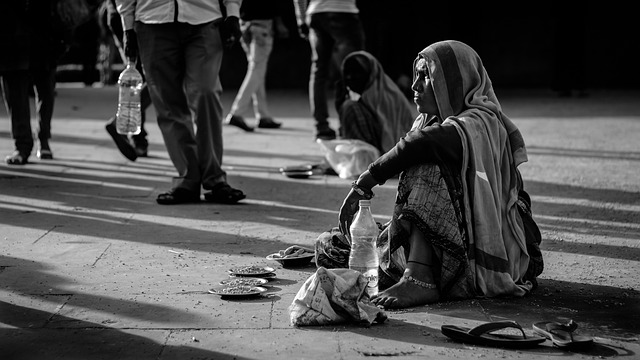

Affordable housing and homelessness prevention are two interconnected issues that are critical to the well-being of individuals and the overall health of communities. As urban populations grow and the cost of living continues to rise, many people find themselves facing housing insecurity or even homelessness. Addressing these challenges requires a multifaceted approach that includes policy interventions, social support systems, and community-driven solutions.
The Affordable Housing Crisis
Affordable housing refers to housing that costs no more than 30% of a household’s income, ensuring that families have enough money for other necessities such as food, healthcare, and education. However, the reality for millions of people around the world is that housing costs consume a disproportionate share of their income, leaving them vulnerable to financial instability and homelessness.
In many urban areas, the gap between wages and housing costs is widening. This is especially true for low- and moderate-income households who often struggle to find affordable rental units. For instance, in cities like San Francisco, New York, and London, housing prices have soared to levels that are unattainable for a significant portion of the population. The lack of affordable options forces many families to make difficult decisions, such as sacrificing healthcare or quality education for their children to keep a roof over their heads.
Moreover, the shortage of affordable housing is not just an urban issue. In rural areas, there may be fewer rental options altogether, driving up costs and making it difficult for low-income families to secure stable housing. This problem is exacerbated by stagnant wages, high unemployment rates, and the rising cost of construction, which limits the ability of developers to build affordable units.
The Link Between Housing and Homelessness
Homelessness is often the result of a combination of factors, including unemployment, mental illness, substance abuse, domestic violence, and systemic inequalities. However, the lack of affordable housing is one of the most significant contributors to homelessness. When people cannot afford stable housing, they are at higher risk of losing their homes due to evictions, foreclosures, or simply being priced out of their neighborhoods.
In many cases, homelessness is not a sudden event but a gradual process. Families may experience “couch surfing” or doubling up with relatives before eventually losing access to safe and stable housing altogether. Others may live in cars, shelters, or temporary housing for extended periods. Once people fall into homelessness, it can be incredibly difficult to escape the cycle, as the instability of homelessness makes it harder to find employment, care for children, or address underlying health issues.
Strategies for Homelessness Prevention
Preventing homelessness requires a proactive approach that addresses the root causes of housing instability. Here are some strategies that have proven effective:
- Expanding Affordable Housing Supply: Governments and private developers can work together to increase the supply of affordable housing through tax incentives, subsidies, and public-private partnerships. Programs like inclusionary zoning, where developers are required to set aside a percentage of new developments for affordable housing, can help ensure that new units are accessible to low-income families.
- Rent Control and Tenant Protections: Rent control policies can help prevent rapid rent increases that drive families out of their homes. In addition, strong tenant protections can prevent unlawful evictions and provide renters with the security they need to stay in their homes.
- Housing Vouchers and Assistance Programs: Housing vouchers, such as those provided by the U.S. Department of Housing and Urban Development (HUD), can help low-income families afford rent in the private market. Additionally, rental assistance programs can provide temporary relief to families facing financial crises, helping them avoid eviction.
- Supportive Housing and Wraparound Services: For individuals who are already homeless or at risk of becoming homeless, supportive housing models combine affordable housing with access to social services, such as healthcare, mental health counseling, and job training. These wraparound services help individuals maintain stable housing and address the underlying issues that contributed to their homelessness.
- Emergency Shelters and Transitional Housing: While not a long-term solution, emergency shelters and transitional housing provide immediate relief for people experiencing homelessness. These facilities can offer a safe place to stay while individuals work towards securing permanent housing.
- Community-Based Prevention Programs: Local communities play a crucial role in homelessness prevention. Programs that offer financial literacy education, mediation between landlords and tenants, and assistance with utility payments can help prevent families from falling into homelessness in the first place.
The Role of Policy and Advocacy
Policy plays a crucial role in both affordable housing and homelessness prevention. Federal, state, and local governments must prioritize investments in affordable housing, increase funding for homelessness prevention programs, and implement policies that protect vulnerable populations from displacement.
Advocacy groups are also key players in driving change. By raising awareness, advocating for policy reforms, and organizing grassroots efforts, these groups can push for more equitable housing solutions. Successful advocacy efforts have led to the passage of affordable housing bonds, the establishment of eviction prevention programs, and increased funding for homelessness services.
Conclusion
Affordable housing and homelessness prevention are deeply intertwined and represent critical areas of focus for any society aiming to foster stability, equity, and economic growth. Ensuring access to affordable, stable housing for all individuals not only improves the quality of life but also strengthens communities by reducing poverty, improving health outcomes, and creating a more resilient and inclusive economy. The path forward requires a collaborative effort between governments, nonprofits, developers, and communities to develop sustainable solutions that prioritize housing as a fundamental human right.
